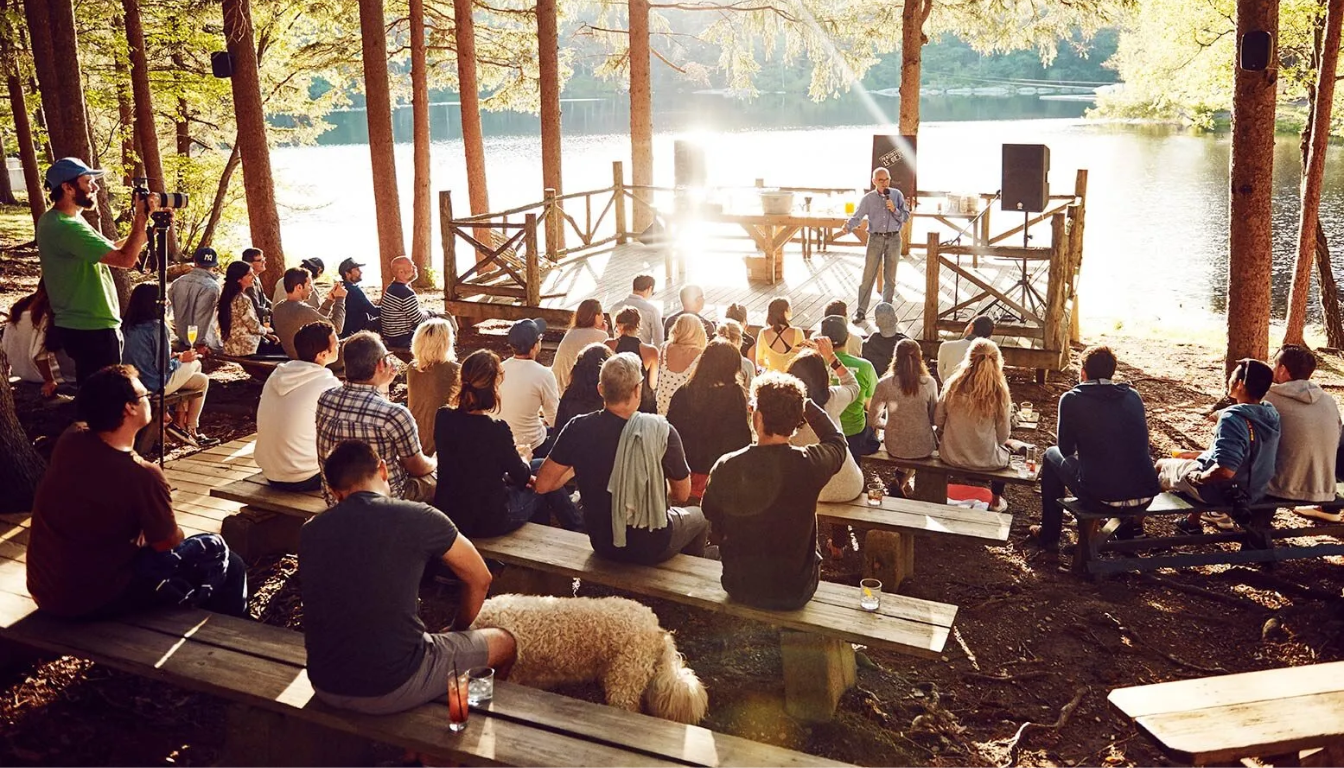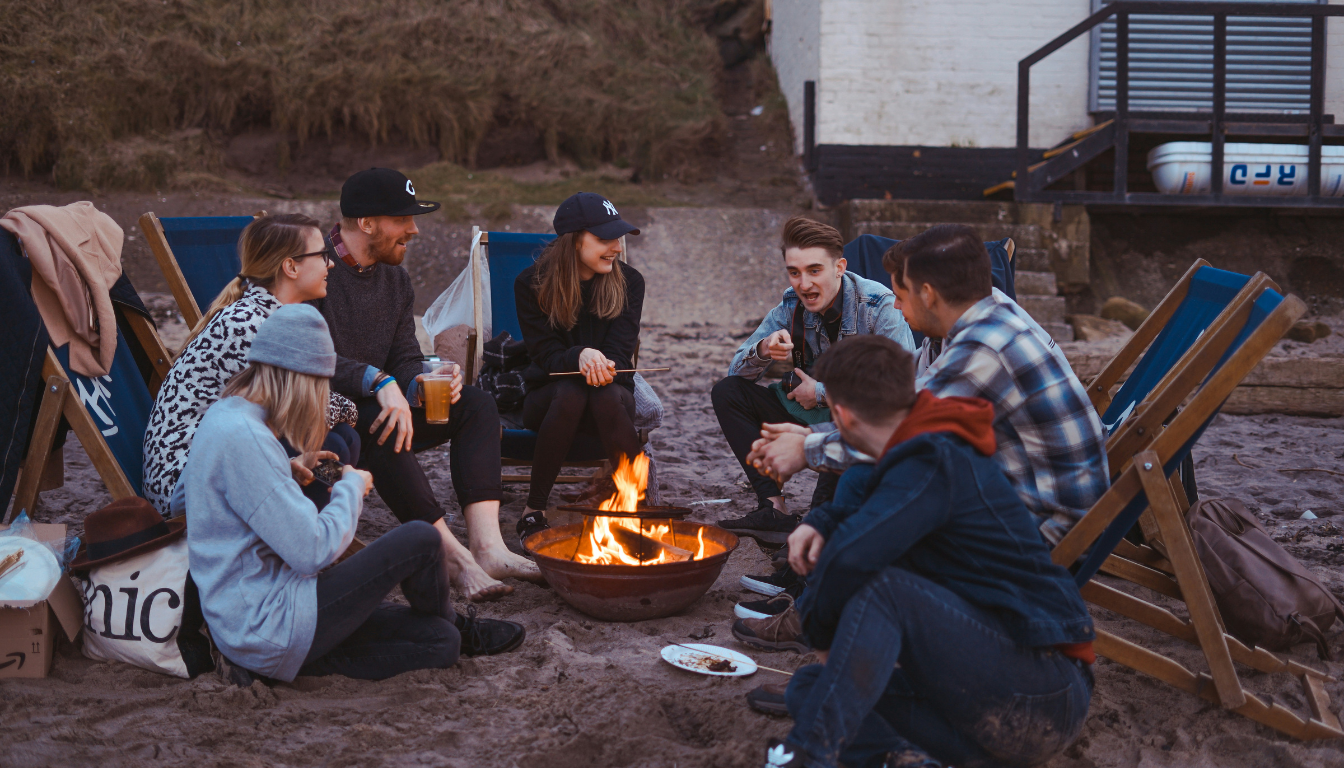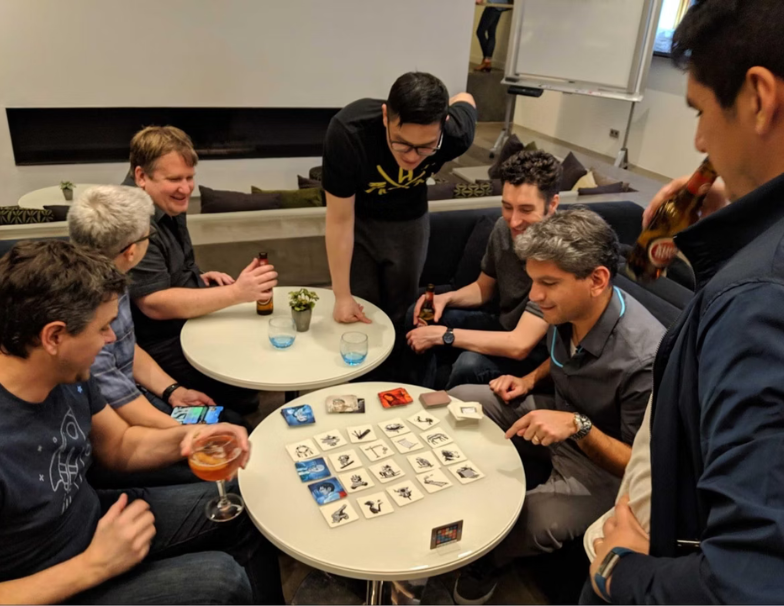Expert Tips to Host Retreats: Maximize Engagement and Success

Planning to host retreats? Our guide breaks down key steps and tips to ensure your retreat is engaging and successful.
Key Takeaways
- Define clear retreat goals and measurable outcomes to enhance engagement and ensure successful planning.
- Choose a venue that supports retreat objectives, prioritizing accessibility, essential amenities, and a conducive atmosphere for participants.
- Implement effective post-retreat follow-up to gather feedback, measure success, and maintain participant engagement.
Define Your Retreat's Purpose and Goals

A successful retreat starts with a clear purpose and the retreat’s goals. Often, retreats focus on learning, bonding, and self-improvement. Goals like fostering connection, growth, and reflection are common. Clear goals guide planning, ensure meaningful outcomes, and align activities for a profitable retreat. The retreat name should reflect these objectives.
Clear goals support decision-making during planning. Identifying measurable outcomes helps evaluate success. Aligning retreat plans with participants’ expectations is an actionable step that enhances engagement and participation, leading to meaningful goals.
Key factors for a successful and impactful retreat include:
- Knowing the target audience and the problem being addressed
- Gathering stakeholder input to increase attendee commitment
- Clearly defining goals to set the stage for success
Setting Specific Outcomes
Setting specific, measurable outcomes ensures the retreat stays focused and effective. Designing the retreat with these outcomes in mind enhances planning and execution. Measurable outcomes allow you to track progress and evaluate success.
Using pre-retreat surveys to gather participants’ expectations and preferences helps align outcomes with their needs. Breaking larger objectives into smaller, manageable steps aids in tracking progress effectively.
Aligning with Participants' Needs
Understanding your audience shapes the retreat’s content and structure. Connecting with participants beforehand enhances their support and engagement. Tailoring content and activities to their interests and preferences ensures a meaningful and engaging experience.
Feedback from previous attendees can guide workshop topics and speaker selection, making the retreat more relevant and impactful. Discussing dietary preferences during registration is also beneficial.
Choose the Right Retreat Venue

Choosing the right venue influences productivity and relaxation, supporting the retreat’s goals. The ambiance sets the tone for participants’ expectations and significantly influences their experience. Considerations such as the number of participants, duration, and location are critical when selecting the venue.
Understanding the target audience helps choose a location that aligns with their desires, ensuring an inspiring atmosphere. Offsite simplifies corporate retreat planning by providing curated venues and vendors worldwide to attract website visitors.
Whether planning a yoga, meditation, or wellness retreat, hosting a retreat and selecting the right venue at a retreat center is crucial for success.
Accessibility and Location
The retreat venue should meet ADA standards to ensure accessibility for all participants. Features like ramps, elevators, and ADA-compliant restrooms should be part of the venue’s offerings.
Consider the venue’s proximity to major transit hubs and transportation options for easy access. Proximity to airports or train stations minimizes travel distractions and enhances participant engagement.
Prioritize accessibility and multiple contact points to enhance guest comfort. Comfortable accommodations and easy access are key to a positive retreat experience.
Essential Amenities
Selecting a venue with essential amenities ensures participant comfort and effectiveness. Key amenities include comfortable workspaces, versatile meeting areas, and spaces for networking and relaxation. Reliable technology, such as Wi-Fi, audio-visual support, and meeting room tech, is vital for smooth communication.
Wellness facilities like fitness centers and pools, along with thoughtful decor, enhance the atmosphere and promote well-being. A venue that covers essential amenities fosters an inviting atmosphere and community building.
Create a Detailed Retreat Agenda

An effective itinerary should outline the daily life schedule, balancing engaging activities with rest periods. A successful agenda balances focused work, team-building, and downtime to maximize engagement and create a fulfilling experience.
Key recommendations for managing activities and team dynamics include:
- Including 30 minutes of free time for every hour of structured activity to facilitate relaxation and integration.
- Engaging in activities that enhance teamwork and communication skills.
- Choosing a few essential activities to maintain focus and prevent overwhelming the team.
Sharing meals during the retreat fosters camaraderie among participants. The agenda should outline the daily flow and include a clear plan to minimize missed expectations. Balancing activities and incorporating team-building are key to a successful retreat agenda.
Balancing Activities
Integrating free time into the schedule allows participants to recharge and absorb their experiences. Allocate ample time of free time for every hour of structured activities.
Flexible meeting spaces accommodate various group activities. Outdoor activities like ropes courses or hiking enhance communication and team support. Balancing structured and unstructured activities engages participants and fosters informal interactions in gathering spaces.
Incorporating Team Building
Team building activities should offer a variety of options to accommodate diverse personalities and skill levels. Creative activities like the Marble Run Challenge boost collaboration, while a Shark Tank-style pitch competition encourages communication and problem-solving.
Outdoor challenges like ropes courses, hiking, and scavenger hunts foster communication and encourage support and collaboration. Team-building activities enhance collaboration, communication, and problem-solving skills within teams.
Offsite activities support team bonding during retreats.
Plan Engaging Content and Activities
Group sessions, individual reflection, workshops, physical activities, meditation sessions, meals, and lodging are common at retreats. Successful retreats offer a mix of learning, community building, and relaxation. Activities should be engaging, meaningful, and align with retreat themes and goals.
To create an unforgettable experience for participants:
- Ensure content connects with participants, caters to their interests, and aligns with retreat goals.
- Provide personalized welcome packages.
- Include thoughtful surprises.
Interactive Workshops
Incorporating hands-on activities in workshops enhances involvement and learning through meaningful activities, improving participant experience. Creative elements like arts and crafts can boost engagement.
Whether a yoga retreat or writing retreat, interactive workshops provide gain valuable insights and foster a sense of community.
Experiential Learning
Key points about hands-on learning and team building activities:
- Hands-on learning activities significantly boost the retention of information related to the retreat’s theme. Key takeaways from these activities include enhanced understanding and engagement.
- Activities mimicking real-life scenarios deepen learning and retention.
- Team building activities can reduce employee turnover by 73%.
Focusing on a few core activities avoids overextending staff, ensuring a more effective and enjoyable retreat experience.
Manage Logistics Efficiently
Effective logistics management ensures a smooth retreat experience, allowing participants to focus on connecting rather than complications. Transportation and travel arrangements should make the venue easily accessible for all participants, complying with ADA standards for inclusivity.
Simplifying on-site coordination through group size booking packages helps manage logistics and streamlines amenities for meetings, accommodations, and catering.
Travel Arrangements
Evaluate transportation options like flights, rental cars, and shuttles to align with the retreat’s schedule. Gather transportation details from participants during booking to arrange transportation and facilitate planning.
To ensure a positive retreat experience:
- Ensure plenty of staff are available during arrivals and departures to handle logistics efficiently and prevent long wait times.
- Provide comfortable accommodations.
- Plan travel arrangements well.
On-Site Coordination
Key elements for effective event management include:
- A dedicated troubleshooter to address unexpected challenges effectively.
- Training staff in local area knowledge to enhance their ability to assist participants.
- Reliable technology support, including high-speed internet and audio-visual equipment, is vital for successful presentations.
Efficient on-site coordination ensures a smooth and enjoyable amazing experience retreat experience for all participants.
Cater to Dietary Needs and Preferences
Nutrition connects the mind, body, and soul, making it essential for any retreat. Consider dietary restrictions to ensure all participants feel nourished and included. Offering a range of food options accommodates different dietary needs.
Professional catering services can provide specialized meal options for various dietary restrictions.
Gathering Dietary Information
Collecting dietary information from participants is essential to plan meals that accommodate all preferences and restrictions. Include dietary preferences and restrictions in the registration form to streamline the process.
Offering diverse food options caters to various dietary needs, ensuring all participants feel included. Professional catering services can meet diverse dietary needs with high-quality, nutritious meals.
Hiring Professional Catering
Professional caterers enhance meal quality at retreats. They provide expertly crafted meals that align with participants’ dietary needs and preferences, ensuring everyone feels included and well-nourished. Collecting dietary preferences during registration helps tailor meal planning effectively.
Professional catering ensures meals align with the retreat’s theme and meet various dietary requirements.
Marketing Your Retreat

Effective marketing attracts participants and ensures the success of your retreat. To achieve this, consider the following steps:
- Define your target audience based on the retreat’s purpose and structure.
- Create an engaging landing page to generate interest and a waitlist.
- Include all necessary details for attendees to make an informed decision.
Utilize social media channels like email marketing to attract your target audience effectively. Polished, professional marketing instills confidence in potential attendees and promotes a high-ticket retreat.
Social Media Campaigns
To engage social media followers before promoting your retreat, increase your presence across various channels by:
- Sharing informative content about the retreat audience
- Highlighting the problems the retreat solves
- Posting pictures
- Sharing schedules
- Telling engaging stories to attract potential attendees.
A strong social media campaign creates excitement, anticipation, and drives higher attendance at your social proof retreat.
Email Marketing
Building an email list before launching a retreat aids in effective promotion and maintains engagement with interested individuals. Email marketing allows for targeted communication to keep potential participants updated and committed.
Using this marketing channel ensures your message reaches a dedicated audience, increasing the likelihood of retreat bookings.
Post-Retreat Follow-Up

Post-retreat follow-up is crucial to maintain momentum and measure outcomes. Following up with participants allows organizers to:
- Gather feedback
- Demonstrate care for their well-being
- Implement changes based on feedback
- Retain participant engagement
Without a proper follow-up process, valuable lessons and goals from the retreat may lose their lasting impression. Here are my final thoughts.
Collecting Participant Feedback
Collecting feedback from participants is crucial to understand what worked well and identify areas for improvement. Automated surveys sent out to participants after the retreat are an effective method for collecting feedback.
Feedback surveys should combine quantitative ratings with qualitative open-ended questions to provide a comprehensive view of participant experiences. Offering incentives can improve attendance and engagement in the feedback collection process.
Measuring Success
Success can be measured for a corporate retreat using pre- and post-retreat surveys, monitoring key performance indicators (KPIs), and comparing total expenses against measurable benefits to measure success. When analyzing gathered feedback, it is essential to identify patterns and recurring themes rather than isolated comments.
Establishing a follow-up schedule with periodic check-ins can gauge the long-term impact of retreat initiatives.
Summary
In summary, hosting a successful retreat requires meticulous planning, from defining clear goals to post-retreat follow-up. Choosing the right venue, creating a balanced agenda, planning engaging content, and managing logistics efficiently are key steps to ensure a memorable and impactful retreat. By catering to dietary needs, marketing effectively, and gathering feedback, you can create a retreat that leaves a lasting impression and drives meaningful outcomes. Inspired by these insights, you’re now ready to host an unforgettable retreat that fosters connection, growth, and reflection.
FAQs
- What is the first step in planning a successful retreat?
The first step in planning a successful retreat is to clearly define its purpose and goals, as this will guide all subsequent decisions and help achieve meaningful outcomes.
- How can I ensure the retreat venue is accessible to all participants?
Ensure the retreat venue meets ADA standards by selecting a location with accessibility features such as ramps and elevators, and make sure it is near major transportation hubs for convenience. This will help guarantee that all participants can access the venue comfortably.
- What are some effective ways to market my retreat?
To effectively market your retreat, leverage social media campaigns and email marketing to connect with your target audience. Additionally, create an engaging landing page and share informative content across multiple channels.
- How do I gather feedback from retreat participants?
To effectively gather feedback from retreat participants, send automated surveys that combine quantitative ratings with qualitative open-ended questions, and consider offering incentives to enhance engagement. This approach will provide comprehensive insights for future improvements.
You may also like
Unique spaces for your next offsite
Find distinctive venues for your upcoming corporate retreat.
Stay Updated with Our Insights
Get exclusive content and valuable updates directly to you.







